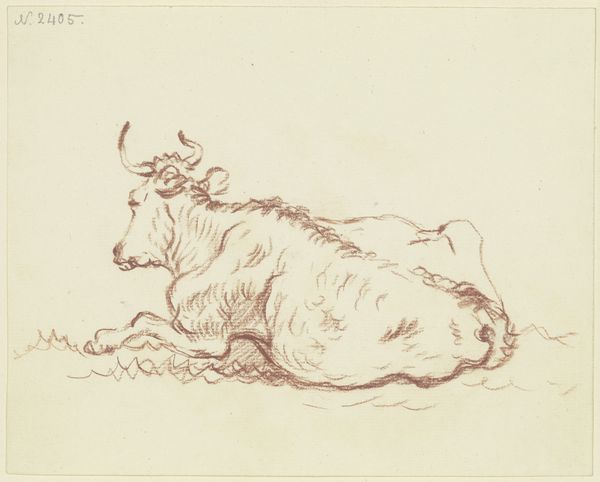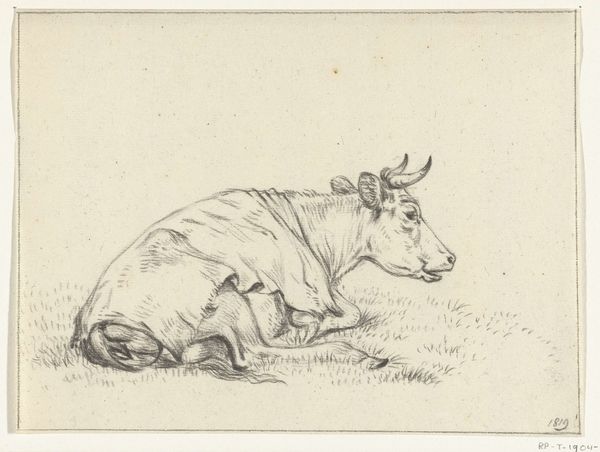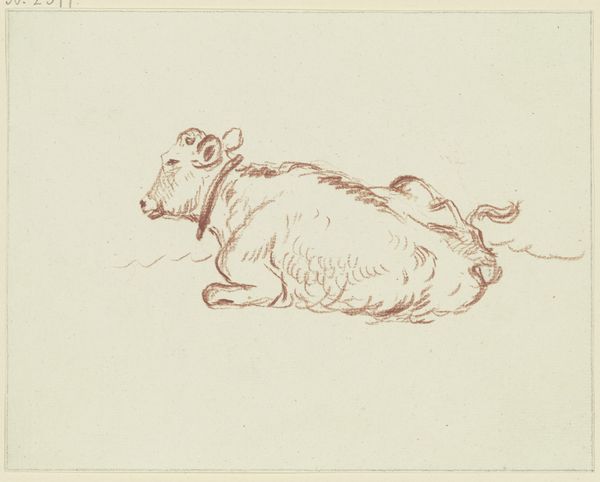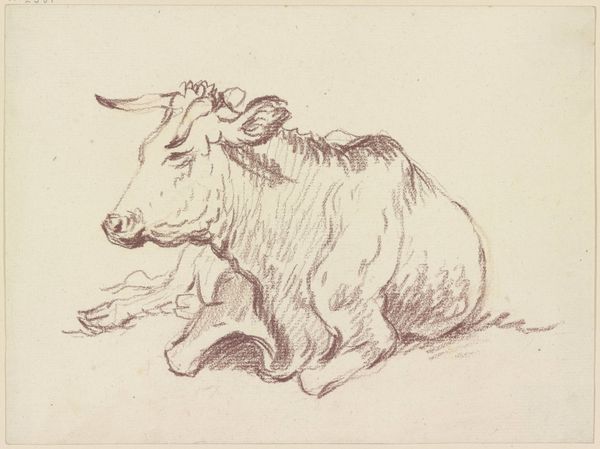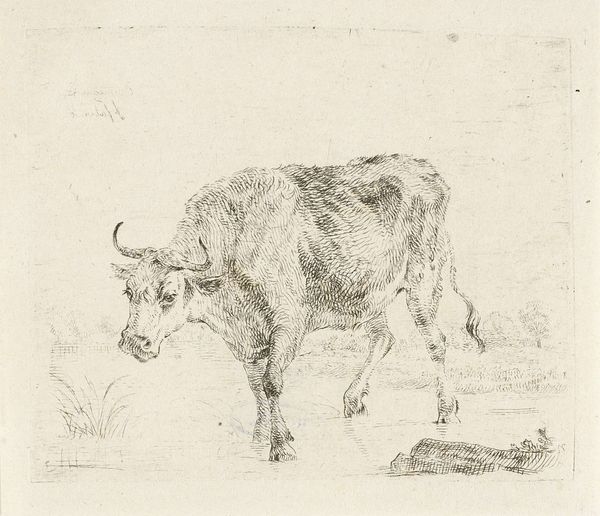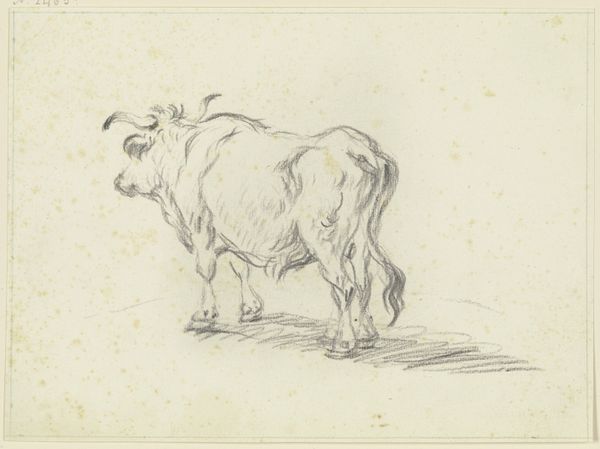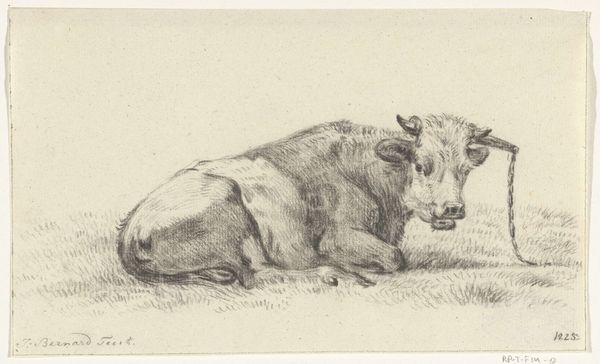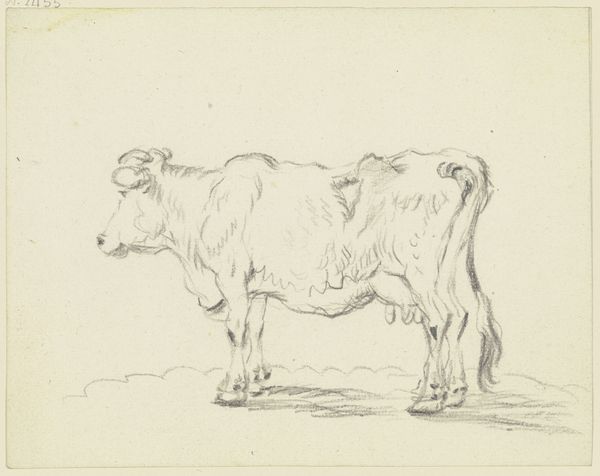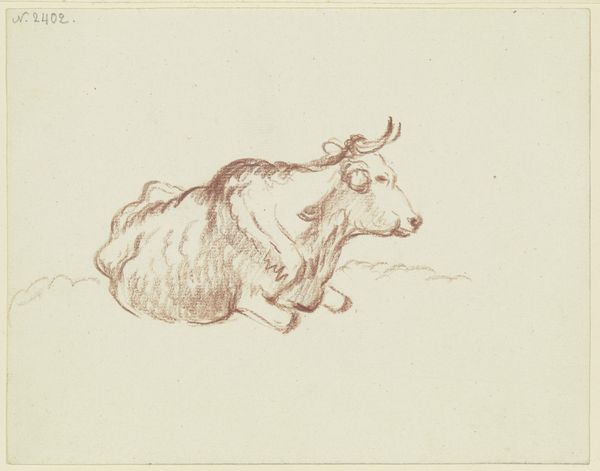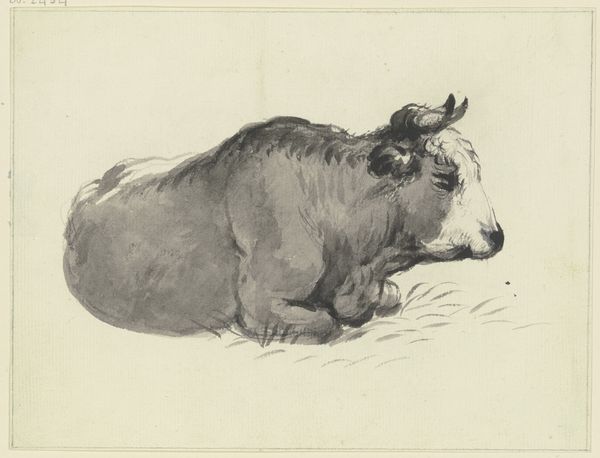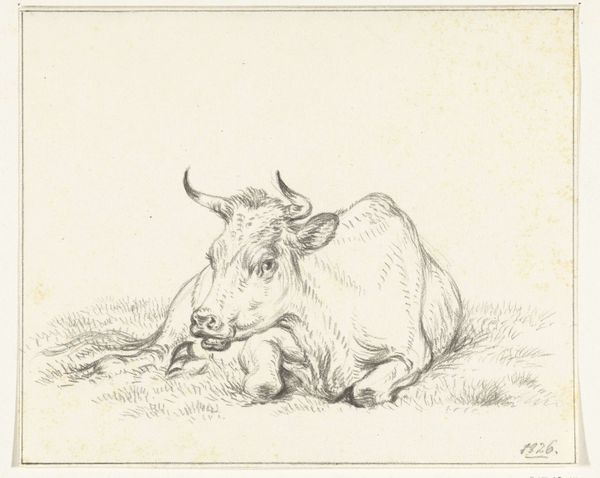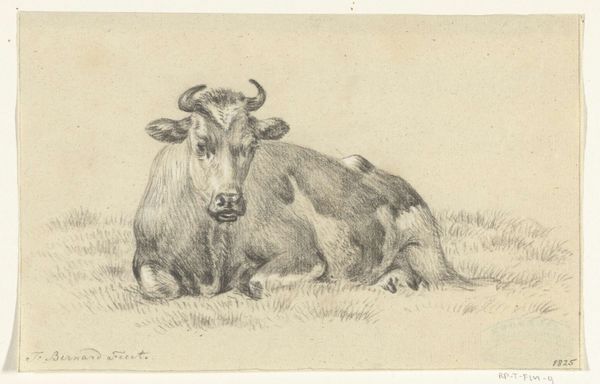
drawing, dry-media, pencil
#
drawing
#
animal
#
pencil sketch
#
landscape
#
figuration
#
dry-media
#
pencil
#
realism
Dimensions: height 226 mm, width 304 mm
Copyright: Rijks Museum: Open Domain
Hendrik Voogd made this drawing of a calf using graphite. The image is a straightforward depiction of rural life, but its existence within the walls of the Rijksmuseum is a fascinating example of how tastes and social structures have changed over time. Made in the Netherlands, possibly in the late 18th or early 19th century, this drawing reflects the rise of landscape art and a growing interest in agrarian subjects. During this time, the Dutch economy was shifting, and there was a renewed appreciation for the countryside, even among city dwellers. This growing sentimentality towards country life can be seen as a reaction to increasing urbanization and industrialization. The museum plays a role too. By displaying an image like this, does it risk romanticizing rural life? Understanding the full context of this drawing requires an understanding of Dutch social and economic history, to understand its public role then and now.
Comments
No comments
Be the first to comment and join the conversation on the ultimate creative platform.
